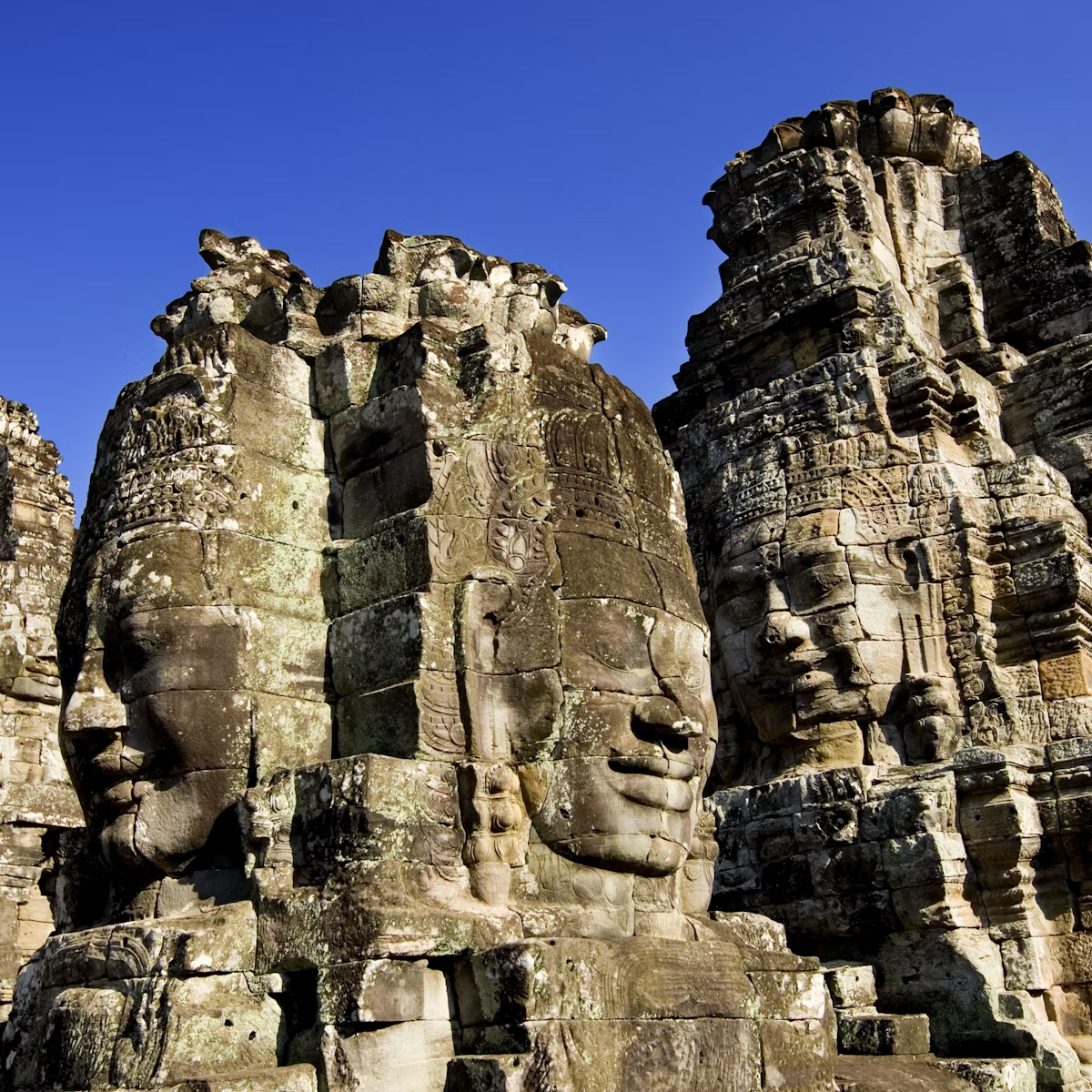The Terrace of the Leper King is just north of the Terrace of Elephants. Dating from the late 12th century, it is a 7m-high platform, on top of which stands a nude, though sexless, statue. The front retaining walls of the terrace are decorated with at least five tiers of meticulously executed carvings. On the southern side of the Terrace of the Leper King, there is access to a hidden terrace with exquisitely preserved carvings.
The aforementioned statue is yet another of Angkor’s mysteries. The original of the statue is held at Phnom Penh’s National Museum, and various theories have been advanced to explain its meaning. Legend has it that at least two of the Angkor kings had leprosy, and the statue may represent one of them. Another theory – a more likely explanation – is that the statue is of Yama, the god of death, and that the Terrace of the Leper King housed the royal crematorium.
The carved walls include seated apsaras and kings wearing pointed diadems, armed with short double-edged swords and accompanied by the court and princesses, the latter adorned with beautiful rows of pearls.
On the southern side of the Terrace of the Leper King (facing the Terrace of Elephants), there is access to the front wall of a hidden terrace that was covered up when the outer structure was built, a sort of terrace within a terrace. The four tiers of apsaras and other figures, including nagas, look as fresh as if they had been carved yesterday, thanks to being covered up for centuries. Some of the figures carry fearsome expressions. As you follow the inner wall of the Terrace of the Leper King, notice the increasingly rough chisel marks on the figures, an indication that this wall was never completed, like many of the temples at Angkor.








